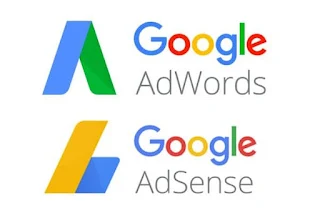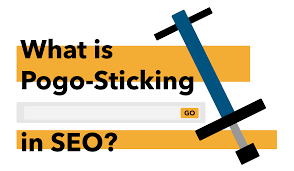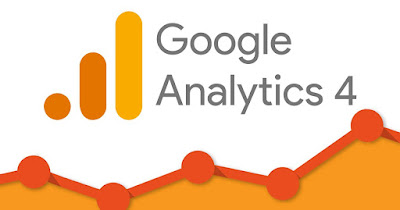History and Evolution of SEO
What Is Search Engine Optimization
History of SEO
Search Engine Optimization (SEO) was introduced with the launch of Google. Google was not widely used in the past. As a result, Google did not provide the necessary data. A few people began using Google in the 2000s. However, most individuals at the time preferred Yahoo! sites. The terrorist group Al-Qaeda attacked the World Trade Center during that time, on September 11, 2001. The attack on the World Trade Center horrified and shocked the whole world. Google users searched for information about the World Trade Center attack. However, they did not receive any crucial information about the attack.
Following this, Google representatives called a meeting to discuss the paucity of information regarding the World Trade Center attack. The on-site search engineers said that since Google's web page was not crawled, it was impossible to gather information. Then, they discovered that making Google's web pages crawl was the only practical method for obtaining more information from the search engine. Later, SEO tactics were created for this.
- Caching: Understanding information on a web page, classifying it according to topics, and then storing the information is referred to as "caching."
- Crawling: Search engines use crawling, which is one of their primary functions, to recognize Google's web pages. The terms robots, bots, and spiders are occasionally used to describe web crawlers.
- Indexing: The term "indexing" describes the process by which consumers receive the data stored on a website as a search result.
However, the search engineers said that Google was unable to maintain the website and that it required Webmasters (custodians of websites). However, they claimed that Google's search engine optimization techniques were kept secret and that sharing them with other webmasters would be harmful to Google.
Finally, Google has made the decision to publish optimization techniques (the rules for optimizing web pages) to webmasters to raise their knowledge. After the publication of the guidelines, websites were easy to crawl. However, as a result, Google's ability to provide accurate information has declined. Google made a lot of improvements in subsequent eras as well, realizing that the quality of the content was declining. These adjustments later influenced the development of search engine optimization (SEO).
Evolution Of SEO
The phrase "passing the juice" is used in the SEO community to describe the value or equity that is transferred from one page or website to another. Hyperlinks transmit these values. Search engines consider links to be recommendations from other websites that your website is valuable and deserving of promotion. With the introduction of Passing the Juice, Google was able to stop pointless link sharing and thereby enhance the quality of the information. In response, Google created the "no follow" tag, which prevents equity from being transferred through links to another website.
Introduction Of Google Ads and Google AdSense
Google AdSense is a program that lets website owners monetize their content by showing advertising. With the help of AdSense, website owners, bloggers, and content producers can make money from their online creations. This will assist in sustaining their efforts and helping to pay upkeep expenses for their platforms or websites. Based on the data, AdSense presents advertisements that are relevant to a person's interests and preferences.
In 2009, personalized search results and auto-suggestion were released. Google began tracking user time on webpages and their level of interactivity around 2009. Pogo-sticking is the practice of people clicking on one website and then another. This results in an increase in the bounce rate for websites that haven't had any user interaction. The percentage of website visitors that leave after viewing just one page and don't engage further is known as the bounce rate. An increased bounce rate may mean that users are not finding the information they are looking for. So Google understands that the content of websites needs to be improved.







Nice articles and your information valuable and good articles thank for the sharing information seo
ReplyDeleteVous cherchez à améliorer votre référencement et votre classement Google ? Eh bien, ne cherchez plus, car j'ai la solution parfaite pour vous !
ReplyDeleteJe suis ravi d'annoncer que je propose désormais un service comprenant 3 000 backlinks pour faire monter en flèche votre référencement et vous aider à atteindre le sommet des résultats de recherche de Google.
Avec ces backlinks, votre site Web gagnera en visibilité, en trafic et, en fin de compte, en conversions.
Et soyons réalistes, qui ne veut pas ça ?
Alors si vous êtes prêt à faire passer votre référencement au niveau supérieur, envoyez-moi un message et commençons ! Assurons-nous que votre site Web obtienne la reconnaissance qu'il mérite : Booster votre SEO avec 3000 backlinks pour meilleur classement google
Nice sharing, thank you so much. This is John from https://www.ufinechem.com/
ReplyDeleteProfessional Home Appliance manufacturers china
DeleteProfessional display manufacturers china
DeleteProfessional woven basket manufacturers china
DeleteCustom Azobe Wood, Bulk Bilinga Wood, Eyoum Wood Suppliers - SENHEDA WOOD
ReplyDeleteCustomized Sportswear Manufacturers, Suppliers - Lever Sports
ReplyDeleteGlobal Clothing and Apparel Manufacturers - Lever Style
ReplyDeleteCustomized Hydraulic Press, Punch Press Manufacturers Suppliers - China Factory - SSHL Machinery
ReplyDelete美国海关清关|空运清关|海运清关|电商打单软件|电商打单系统|电商打单程序|商家打单工具服务公司-千城互联
ReplyDeleteprecision machining, machine parts manufacturing and high-quality services and products - Anebon Metal
ReplyDeleteYangjiang SAAFI Industry and Trade Co., Ltd. is a leading manufacturer and exporter of scissors and knives.
ReplyDeleteBrightlx | LED Optics Manufacturer, Custom LED Lens Solutions, LED Lens Innovation.
ReplyDelete